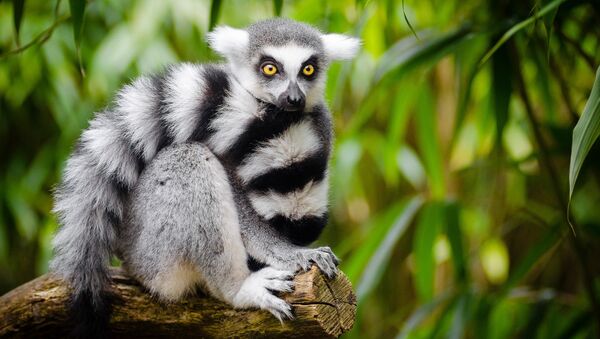The study, titled LemurFaceID: a face recognition system to facilitate individual indentification of lemurs, and published in the BMC Zoology Journal, reveals software that was developed by a team of US-based lemur researchers Rachel Jacobs and Stacey Tecot and biometrics scientist Anil Jain.
Picking a #lemur out of a line-up: introducing #LemurFaceID, a facial recognition system for wild lemurshttps://t.co/FrS2cfZrUV pic.twitter.com/4N60vHurz9
— BioMed Central (@BioMedCentral) February 17, 2017
The software, called LemurFaceID, is able to identify more than 100 different individual animals with 98.7 percent accuracy and hopes to help with conversation efforts, giving researchers a less invasive way to track individual primates and whole families across generations.
"Like humans, lemurs have unique facial characteristics that can be recognized by this system. Once optimized, LemurFaceID can assist with long-term research of endangered species by providing a rapid, cost-effective and accurate method for identification," saod Anil Jain.
The Mongoose Lemur is versatile in his habitat but like many leumurs is critically endangered. http://t.co/aEzNPLMA3b pic.twitter.com/vS10ELbB5q
— Angela LemurKat (@Makilumi) 24 February 2015
The system is adapted from facial recognition software for humans. It was fed images of some 462 different lemurs, covering a variety of different species, with the main focus being the red-bellied lemur — a species found in the rainforests of eastern Madagascar, that's vulnerable, but not endangered.
Normally, researchers rely on characteristics such as injuries, scars and body size to identify individual lemurs. However these markers can be difficult to track over time, as lemurs mature and grow. So by comparison, using more stable facial markers for identification should make it easier to track lemurs over time.
"Studying lemur individuals and populations over long periods of time provides crucial data on how long individuals live in the wild, how frequently they reproduce, as well as rates of infant and juvenile mortality and ultimately population growth and decline, using LemurFaceID can inform conservation strategies for lemurs, a highly endangered group of mammals," co-author of the report, Stacey Tecot, said in a recent interview.
With the list of endangered species increasing, the need to save animals and preserve them for future generations is of paramount importance. This new technology may help not just lemur conservation, but also protecting other species as well.


